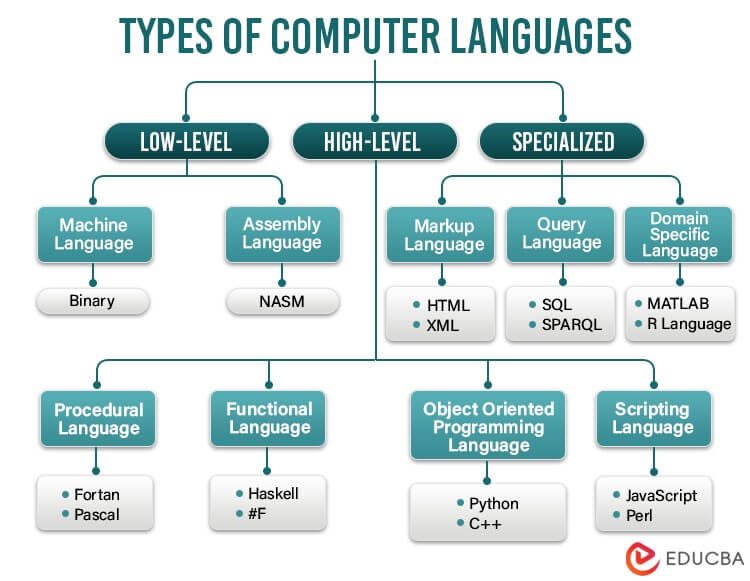
Certainly, I can give you a brief introduction to each of the programming languages mentioned:
- Python:
- Introduction: Python is a high-level, interpreted programming language known for its readability and versatility. It supports multiple programming paradigms and is widely used in web development, data analysis, artificial intelligence, and more.
- JavaScript:
- Introduction: JavaScript is a versatile scripting language primarily used for front-end web development. It allows for interactive and dynamic content on websites and can also be used on the server side (Node.js).
- Java:
- Introduction: Java is a general-purpose, object-oriented programming language known for its portability. It’s used in a wide range of applications, from web development to large-scale enterprise systems.
- C++:
- Introduction: C++ is an extension of the C programming language with added features like object-oriented programming. It’s used for system and application software, game development, and performance-critical tasks.
- C#:
- Introduction: Developed by Microsoft, C# (pronounced C sharp) is a modern, object-oriented language used for Windows application development, game development (Unity), and enterprise-level applications.
- Ruby:
- Introduction: Ruby is a dynamic, object-oriented programming language known for its simplicity and productivity. It is often used in web development, especially with the Ruby on Rails framework.
- Swift:
- Introduction: Swift is Apple’s programming language designed for iOS and macOS app development. It aims to be fast, safe, and expressive, making it easier to write reliable code.
- PHP:
- Introduction: PHP (Hypertext Preprocessor) is a server-side scripting language designed for web development. It’s commonly used to create dynamic web pages and interact with databases.
- HTML/CSS:
- Introduction: While not programming languages in the traditional sense, HTML (Hypertext Markup Language) and CSS (Cascading Style Sheets) are essential for web development. HTML structures content, and CSS styles it.
- SQL:
- Introduction: SQL (Structured Query Language) is a domain-specific language used for managing and querying relational databases. It allows developers to interact with databases to retrieve, update, and manipulate data.
- Go (Golang):
- Introduction: Go, often referred to as Golang, is a statically typed language developed by Google. It’s known for its simplicity, efficiency, and built-in support for concurrent programming. It’s used in system programming, cloud computing, and networking.
- R:
- Introduction: R is a programming language and environment specifically designed for statistical computing and data analysis. It provides extensive tools for data manipulation, statistical modeling, and visualization.
- MATLAB:
- Introduction: MATLAB (MATrix LABoratory) is a programming language and environment used primarily in engineering, mathematics, and scientific computing. It’s widely used for tasks like numerical analysis, signal processing, and image processing.
- TypeScript:
- Introduction: TypeScript is a superset of JavaScript that adds static typing to the language. It’s often used in large-scale web applications to catch errors early in the development process.
- Shell scripting languages (e.g., Bash):
- Introduction: Shell scripting languages are used for automating tasks in a command-line environment. Bash (Bourne Again SHell) is a popular shell scripting language in Unix-like operating systems.
These introductions provide a glimpse into the purposes and features of each programming language. The choice of language often depends on the specific requirements of a project or task.
